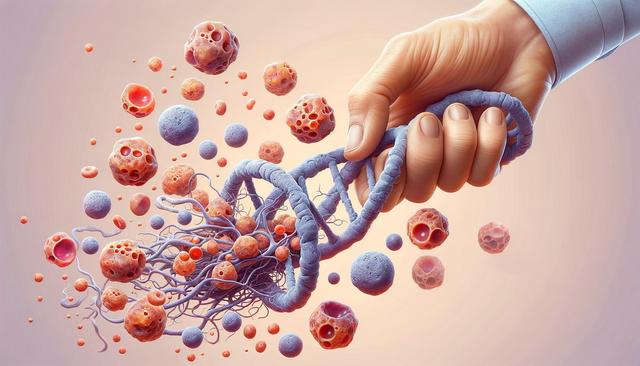What Is Amyloidosis?
Amyloidosis refers to a group of diseases in which abnormal protein deposits, known as amyloid, accumulate in organs and tissues. These deposits can interfere with normal function and lead to significant health complications. Amyloid proteins are misfolded proteins that the body cannot properly break down, causing them to build up over time. There are several types of amyloidosis, each linked to different proteins and underlying causes. Some forms are hereditary, while others develop due to chronic diseases or as a result of aging. The most common types include AL (light chain) amyloidosis, AA (associated with chronic inflammation), and ATTR (transthyretin) amyloidosis.
Though rare, amyloidosis can affect a wide range of body systems, including the heart, kidneys, liver, and nervous system. Because the symptoms vary depending on the organs involved, it can be difficult to diagnose early. In many cases, patients may not realize they have a serious condition until significant damage has already occurred.
Common Symptoms and Early Warning Signs
The symptoms of amyloidosis can be subtle at first and often resemble those of more common illnesses. This makes early diagnosis challenging. However, being aware of the potential signs can lead to earlier detection and more effective management. Common symptoms include:
- Fatigue and weakness
- Swelling in the legs and ankles
- Shortness of breath
- Unexplained weight loss
- Numbness or tingling in the hands and feet
- Enlarged tongue (macroglossia)
When the heart is affected, patients may experience symptoms similar to heart failure, such as fluid retention and irregular heartbeat. If the kidneys are involved, protein in the urine and reduced kidney function are common signs. A combination of these symptoms should prompt further medical evaluation, particularly if they persist or worsen over time.
Diagnosis and Medical Evaluation
Diagnosing amyloidosis requires a thorough medical evaluation, as its symptoms overlap with many other conditions. Physicians typically begin with a physical exam and review of the patient’s medical history. If amyloidosis is suspected, several tests can help confirm the diagnosis, such as:
- Blood and urine tests to detect abnormal proteins
- Imaging studies to assess organ function
- Biopsy of affected tissues, often stained to detect amyloid deposits
- Genetic testing in cases of suspected hereditary amyloidosis
Specialized tests, such as mass spectrometry or immunohistochemistry, may also be used to identify the type of amyloid protein involved. Accurate diagnosis of the specific type of amyloidosis is critical for determining the most appropriate treatment approach.
Treatment Options and Management Strategies
Treatment for amyloidosis depends on the type of the disease and the organs involved. The primary goal is to reduce the production of amyloid-forming proteins and manage the symptoms caused by organ damage. Common treatment strategies include:
- Medications to stop abnormal protein production (e.g., chemotherapy in AL amyloidosis)
- Targeted therapies for specific protein types
- Organ-specific treatments, such as diuretics for heart-related symptoms or dialysis for kidney failure
- Liver or stem cell transplants in select cases
Supportive care plays an important role in improving quality of life. This includes managing blood pressure, maintaining adequate nutrition, and addressing complications. Patients often benefit from a multidisciplinary care team that may include cardiologists, nephrologists, hematologists, and genetic counselors.
Living with Amyloidosis
Living with amyloidosis requires ongoing medical care, lifestyle adjustments, and emotional support. Many individuals find it helpful to connect with others facing similar challenges through support groups or patient advocacy organizations. Regular follow-up is essential to monitor disease progression and adjust treatment as needed.
To manage the condition effectively, patients are encouraged to:
- Follow a tailored treatment plan developed with their healthcare providers
- Attend all recommended check-ups and screenings
- Report new or worsening symptoms promptly
- Adopt a balanced diet and gentle physical activity, as tolerated
- Seek mental health support if needed, as chronic illness can take an emotional toll
Although living with amyloidosis can be demanding, early detection and proper care can significantly improve outcomes and quality of life. Advances in research continue to offer hope for new therapies and improved understanding of this complex condition.
Conclusion: Navigating a Rare but Treatable Condition
Amyloidosis is a challenging condition, but with increased awareness, timely diagnosis, and comprehensive treatment, many individuals can manage its symptoms and maintain a meaningful quality of life. Staying informed and working closely with healthcare professionals are key steps in navigating this rare disease. For those affected, support systems and ongoing research provide valuable resources and hope for the future.




Leave a Reply